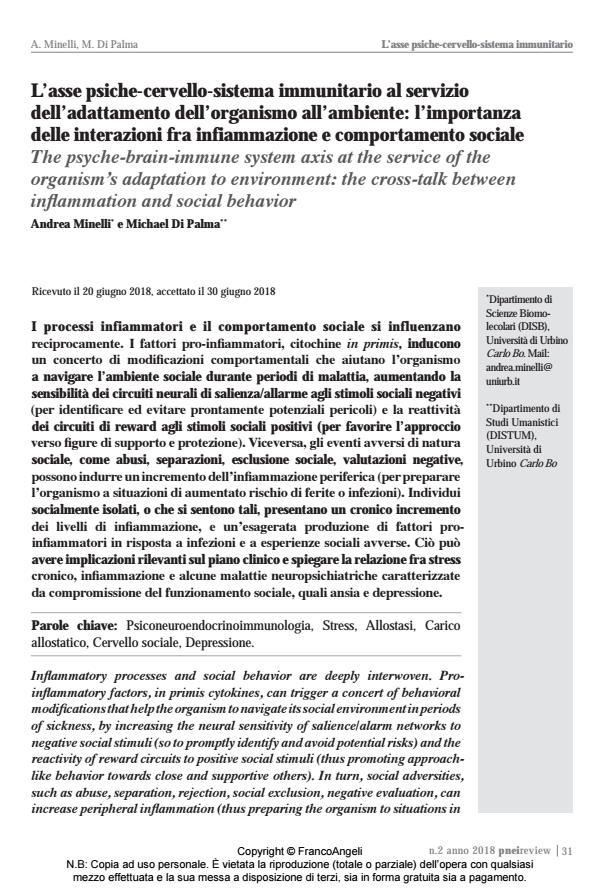The psyche-brain-immune system axis at the service of the organism’s adaptation to environment: the cross-talk between infl ammation and social behavior
Journal title PNEI REVIEW
Author/s Andrea Minelli, Michael Di Palma
Publishing Year 2018 Issue 2018/2
Language Italian Pages 15 P. 31-45 File size 1146 KB
DOI 10.3280/PNEI2018-002003
DOI is like a bar code for intellectual property: to have more infomation
click here
Below, you can see the article first page
If you want to buy this article in PDF format, you can do it, following the instructions to buy download credits

FrancoAngeli is member of Publishers International Linking Association, Inc (PILA), a not-for-profit association which run the CrossRef service enabling links to and from online scholarly content.
Infl ammatory processes and social behavior are deeply interwoven. Proinfl ammatory factors, in primis cytokines, can trigger a concert of behavioral modifi cations that help the organism to navigate its social environment in periods of sickness, by increasing the neural sensitivity of salience/alarm networks to negative social stimuli (so to promptly identify and avoid potential risks) and the reactivity of reward circuits to positive social stimuli (thus promoting approachlike behavior towards close and supportive others). In turn, social adversities, such as abuse, separation, rejection, social exclusion, negative evaluation, can increase peripheral infl ammation (thus preparing the organism to situations in which wounding and infections are more likely to occur). Individuals who are more socially disconnected, or lonely, display a chronic elevation of peripheral infl ammatory markers, and an exaggerated production of pro-infl ammatory factors in response to infections and negative social experiences. This may have relevant clinical implications and shed light on the relationships between chronic stress, infl ammation, and neuropsychiatric disorders characterized by social dysbehavior, such as anxiety and depression.
Keywords: Psychoneuroendocrinoimmunology, Stress, Allostasis, Allostatic load, Social brain, Depression.
Andrea Minelli, Michael Di Palma, L’asse psiche-cervello-sistema immunitario al servizio dell’adattamento dell’organismo all’ambiente: l’importanza delle interazioni fra infiammazione e comportamento sociale in "PNEI REVIEW" 2/2018, pp 31-45, DOI: 10.3280/PNEI2018-002003